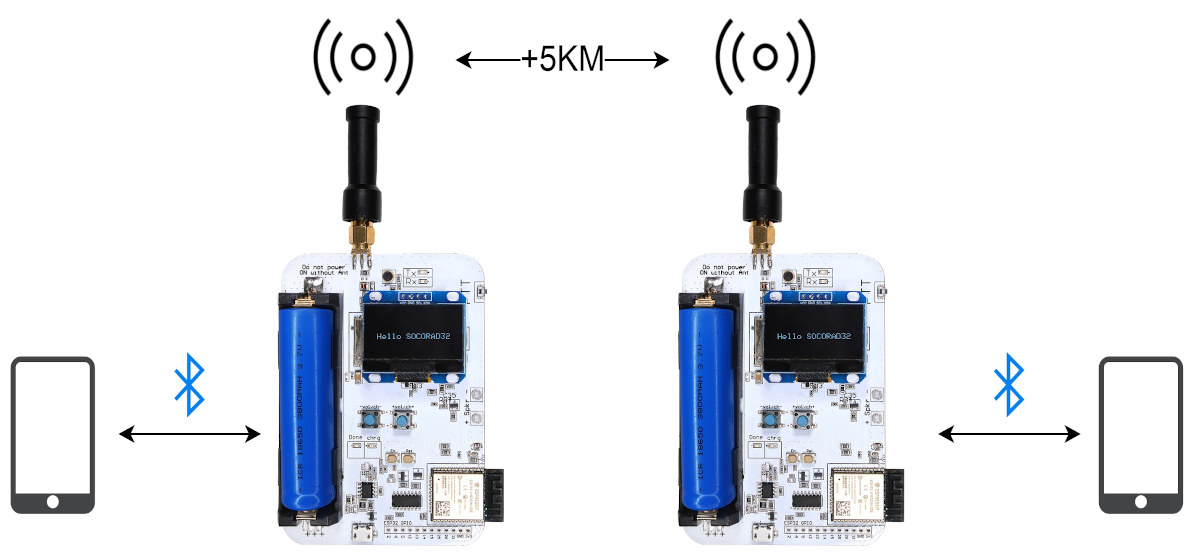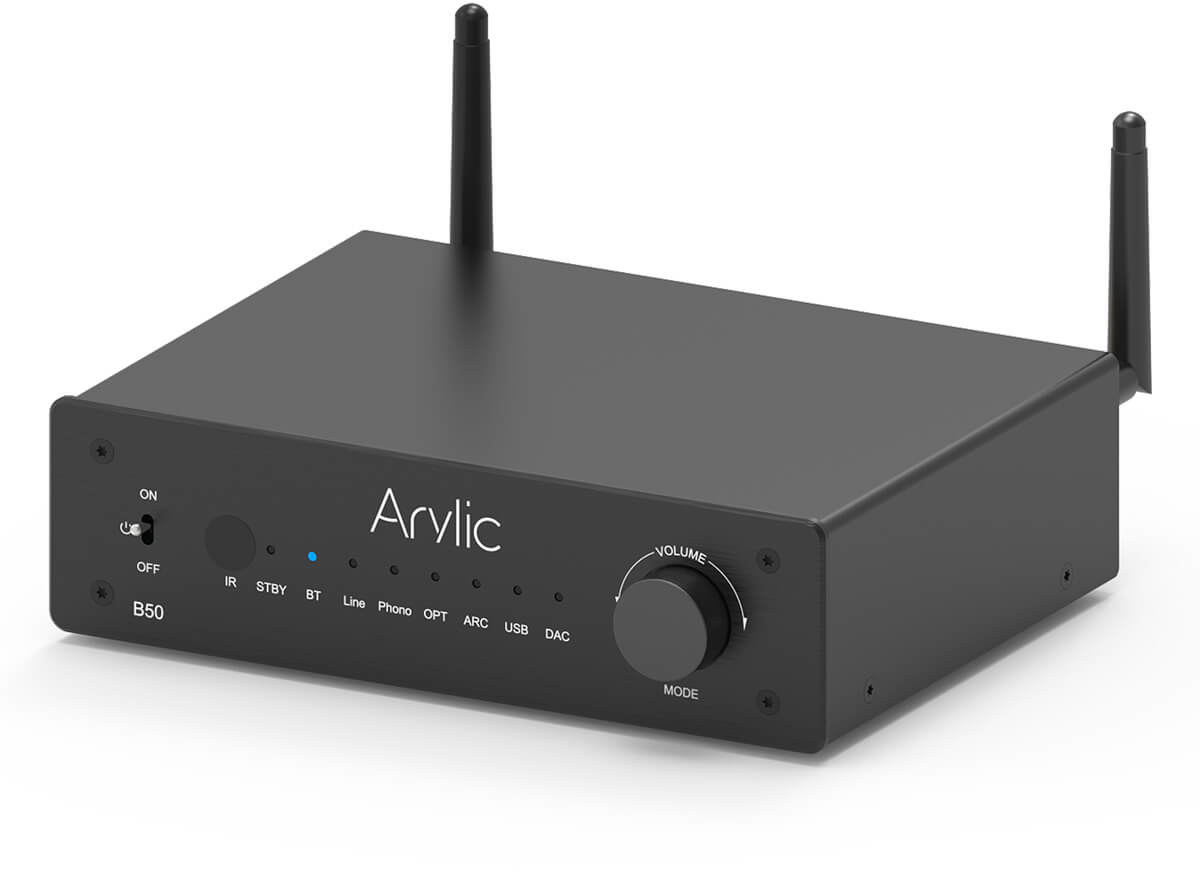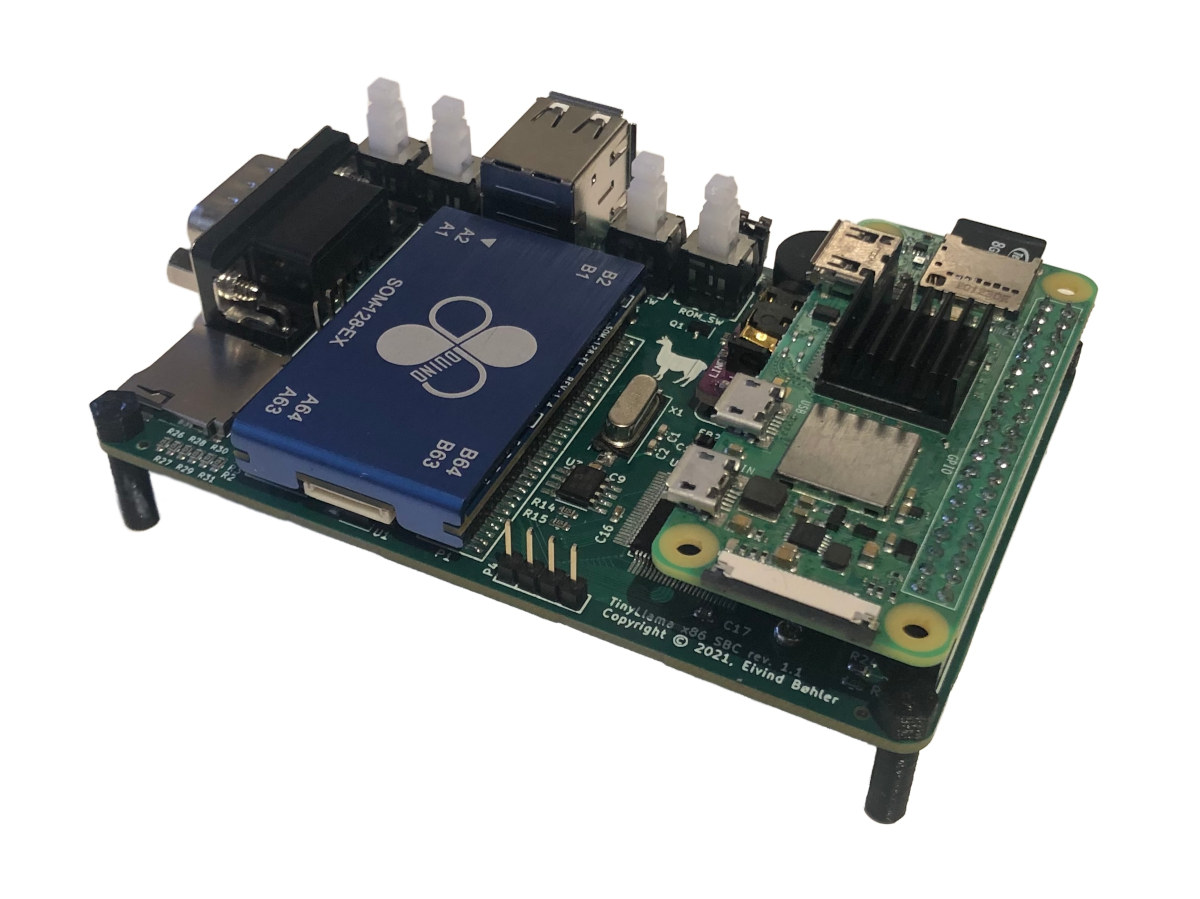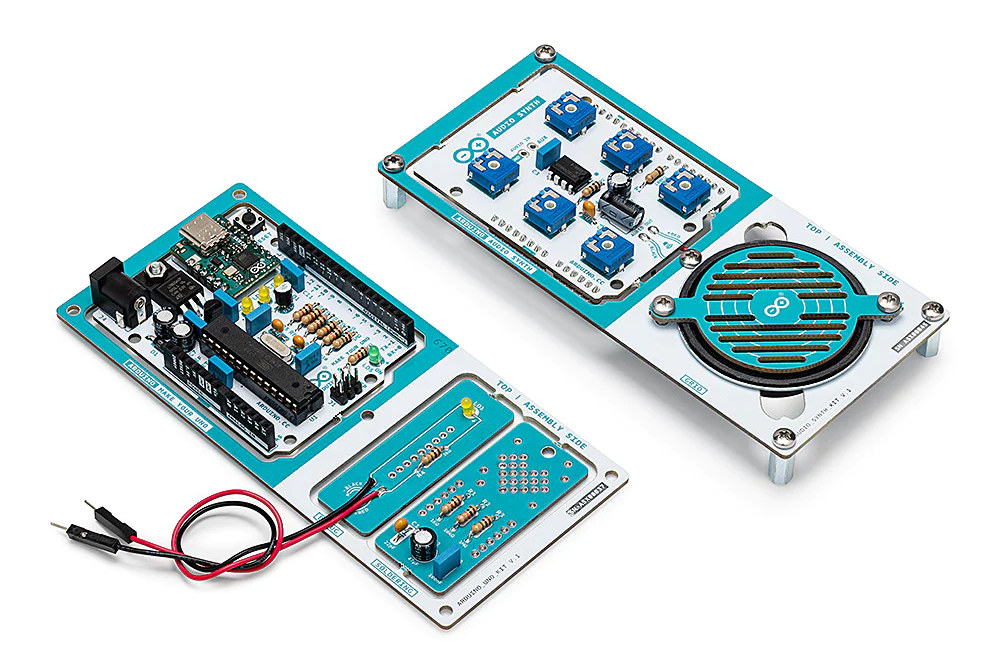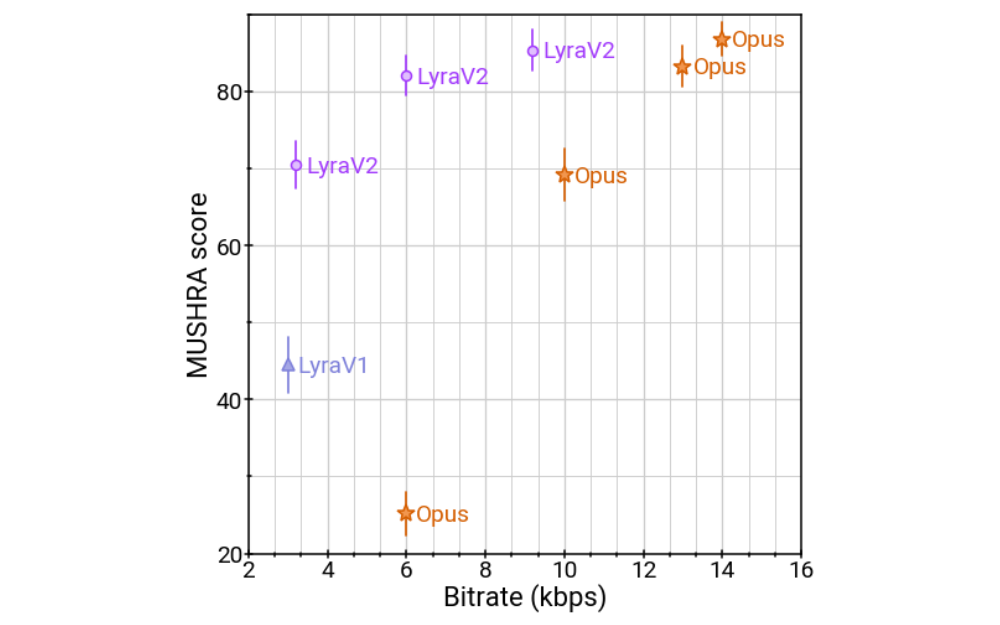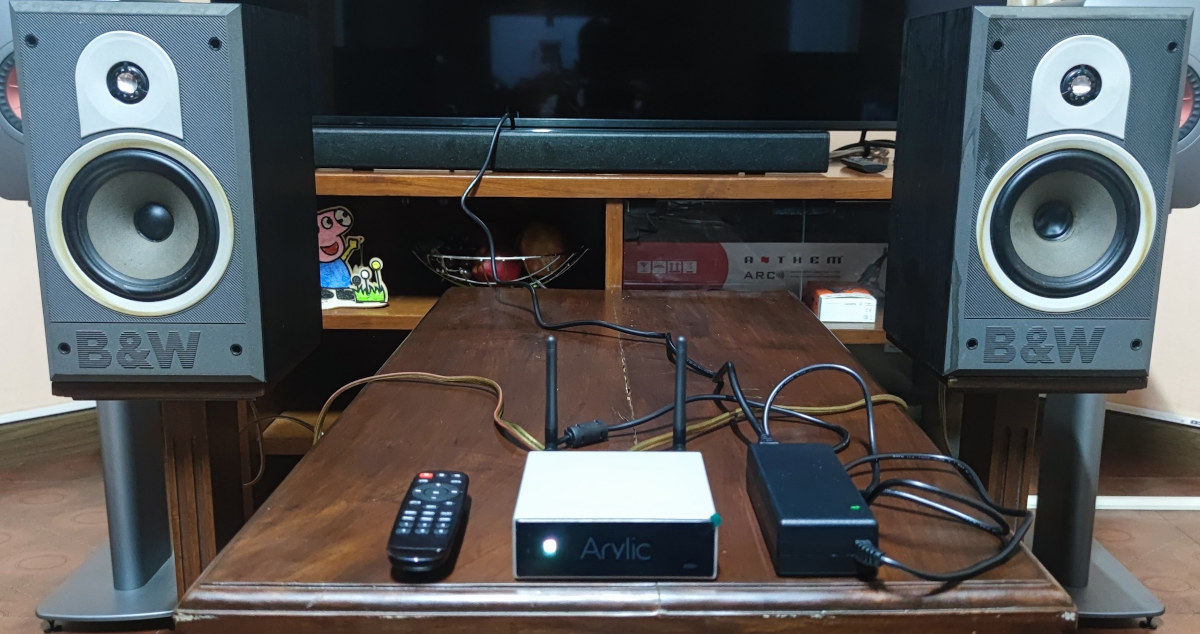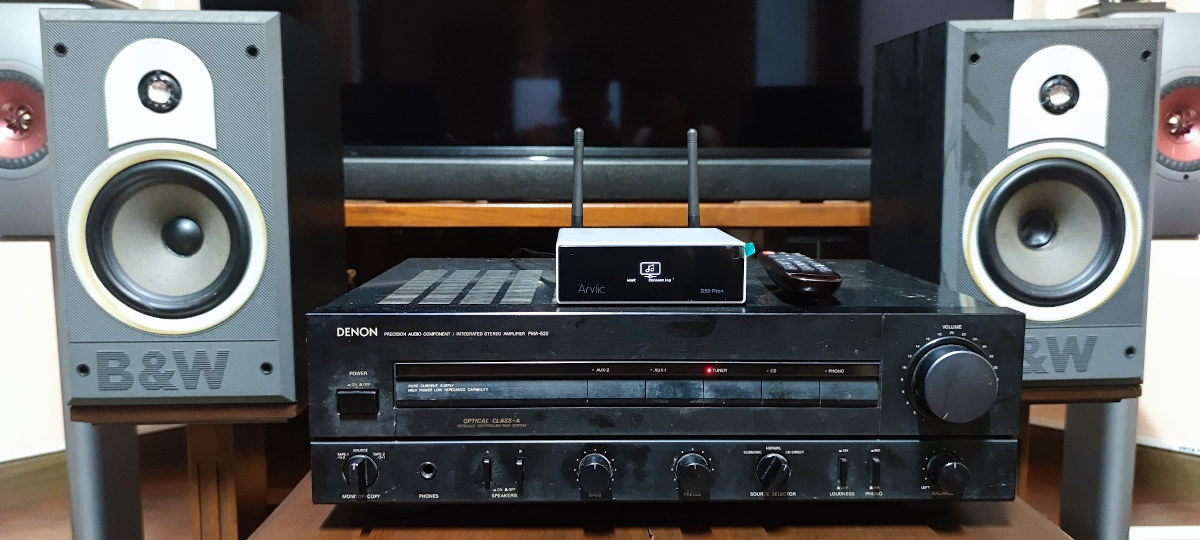SOCORAD32, aka ESP32 Software Controlled Radio, is a hackable, open-source hardware ESP32-based amateur radio board for walkie-talkie and data communication applications. The board comes with an ESP32 module with WiFi 4 and Bluetooth connectivity, an RDA Microelectronics RDA1846 RF IC used in many commercial walkie-talkies and offering a range up of to 5 km, a small display, a speaker, and a 18650 battery holder. SOCORAD32 specifications: Microcontroller module – ESP32-WROOVER-32E with ESP32 dual-core microcontroller, 4MB flash, 2.4 GHz WiFi and Bluetooth connectivity, built-in PCB antenna Walkie-talkie chip – RDA1846 single-chip transceiver for Walkie-Talkie applications (See datasheet and programming guide for details) Frequency Range: ISM 400 – 470 MHz Frequency Step: 5 K / 6.25 K / 12.5 K / 25 K RF Output Power: 2 W / 0.5 W (+5 KM @ 2 W) set to what the local law permits RF Input Sensitivity: -122 dBm Voice Scrambling: 8 type […]
Arylic B50 – A Qualcomm QCC3040 based Bluetooth stereo amplifier with audio transmitter (Sponsored)
Arylic B50 is a Bluetooth 5.2 stereo amplifier with an audio transmitter based on Qualcomm QCC3040 low-power Bluetooth Audio SoC that’s typically used in wireless earbuds. The all-in-one Bluetooth amplifier supports aptX HD audio transmission and reception, can handle two Bluetooth sources or two Bluetooth speakers or earbuds, and offers a wide range of interfaces including HDMI ARC, Phono in, RCA in, optical S/PDIF in, subwoofer out, and more. The system can also be connected to two wired speakers up to 50W @ 4 Ohms. Arylic B50 specifications: SoC – Qualcomm QCC3040 with 32-bit application processor @ 32 MHz, 32-bit system processor @ 32 MHz, Kalimba DSP @ 120 MHz, Bluetooth 5.2 and aptX HD support. Bluetooth Version 5.2 with up to 15m range Transmit – 2x Bluetooth Tx for up to 2 Bluetooth speakers or earbuds Receiver – 2x Bluetooth Rx for up to 2 Bluetooth transmitter devices Supported […]
PineBuds Pro ANC & TWS Bluetooth earbuds with open-source firmware launched for $70
Pine64 has just started taking orders for the PineBuds Pro ANC (Active Noise Cancellation) & TWS (True Wireless Sound) earbuds based on the Bestechnic BES2300-YP dual-core Arm Cortex-M4F Bluetooth audio microcontroller found in the PineSound development board. There are plenty of TWS earbuds on the market, but the PineBuds Pro earbuds are hackable thanks to an open-source firmware that could pave the way to interesting features, and potentially the development of open-source firmware transforming the earbuds into hearing aids. PineBuds Pro specifications: WiSoC – Bestechnic BES 2300YP dual-core Arm Cortex-M4F @ up to 300 MHz with HW DSP instruction, 992KB SRAM, 4MB flash, Bluetooth 5.2 dual mode. Supports hybrid ANC (active noise cancellation) and TWS (true wireless stereo). Wireless Bluetooth 5.2 dual-mode connectivity Bluetooth Profile: A2DP, AVRCP, HFP Audio 3x microphones: FeedForward, FeedBack, Talk with Hybrid Adaptive ANC technology blocking out background noise up to 45dB 6 mm dynamic transducer […]
TinyLlama x86 retro computer uses the Raspberry Pi Zero 2 W as a MIDI synthesizer
The TinyLlama x86 retro computer board is designed to run DOS games on a DM&P Vortex86EX 32-bit x86 processor and integrates a MIDI synthesizer based on Raspberry Pi Zero 2 running MT32-Pi firmware. Growing up playing games on 386/486-era computers, Eivind Bohler looked for similar recent hardware to play DOS games and after discovering the 86Duino x86 Arduino-compatible board, he decided to use the SOM-128-EX module powering the board to create the TinyLlama board with a Sound Blaster Pro-compatible Crystal CS4237B sound chip and a MIDI synthesizer. TinyLlama specifications: D&MP SOM-128-EX system-on-module with Processor – DM&P Vortex86EX 32-bit x86 processor @ 60 to 500 MHz System Memory – 128MB DDR3 Storage – 8MB SPI flash Storage – MicroSD card socket Video Output – VGA up to 1024×768 @ 60 Hz using the Vortex86VGA module running off an x1 PCI-e lane Audio Crystal CS4237B all-in-one audio chip MIDI synthesizer with Raspberry Pi […]
Learn soldering and programming with the Arduino Make Your UNO Kit
Arduino Make Your UNO Kit is a kit with two boards, one for the microcontroller and the other for audio, and all components required that can be used to learn how to solder and then Arduino programming. Once soldering and assembly are complete you’ll hopefully get a working Arduino UNO and an audio synthesizer shield. But before you get there, you’ll need to equip yourself with a soldering iron and some soldering tin to solder the components below to the two PCBs. Package content: Arduino Make Your UNO board’s components Make Your UNO PCB Socket for ATMega328p MCU Microchip ATmega328p 8-bit AVR microcontroller USB Type-C serial adapter board Various 1k Ohm, 10k Ohm. and 1M Ohm resistors 3x Ceramic capacitors (22pF) 3x Electrolytic capacitors (47uF) 7x Polyester capacitors (100nF) 1x 1N4007 diode 1x 16MHz crystal 4x Yellow LEDs, 1x Green LED 1x Push-Button 1x MOSFET 2x I/O connectors 6-pin header […]
Lyra V2 open-source audio codec gets faster, higher quality and compatible with more platforms
Lyra V2 is an update to the open-source Lyra audio codec introduced last year by Google, with a new architecture that offers scalable bitrate capabilities, better performance, higher quality audio, and works on more platforms. Under the hood, Lyra V2 is based on an end-to-end neural audio codec called SoundStream with a “residual vector quantizer” (RVQ) sitting before and after the transmission channel, and that can change the audio bitrate at any time by selecting the number of quantizers to use. Three bitrates are supported: 3.2 kps, 6 kbps, and 9.2 kbps. Lyra V2 leverages artificial intelligence, and a TensorFlow Lite model enables it to run on Android phones, Linux, as well as Mac and Windows although support for the latter two is experimental. iOS and other embedded platforms are not supported at this time, but this may change in the future. It gets more interesting once we start to […]
Arylic A50+ review – An entry-level wireless stereo amplifier
The Arylic A50+ is a stereo audio streamer with a built-in power amplifier and support for wireless networks such as WiFi and Bluetooth as well as wired connections such as Ethernet, Analog RCA Line In, optical S/PDIF input, Subwoofer Out, and USB host port. All you need to do is connect the Arylic A50+ amplifier to passive speakers, and you can then easily stream music from streaming services such as Spotify, Tidal, or Qobuz in high-definition audio with the company’s 4STREAM app or another compatible app. Multiple A50+ wireless amplifiers can also be connected through your house to enable multiple rooms and/or zones support. Arylic A50+ unboxing Arylic A50+ wireless amplifier teardown We can open the device after loosening four screws and have a look at the various electronic components used in the design. The main board, named Up2Stream A50Pro, consists of 5 important integrated ICs: Those include: […]
Review of Arylic S50 Pro+ wireless stereo pre-amplifier
The Arylic S50 Pro+ is an audio streamer with a built-in preamp. It can be connected to various wireless networks such as WiFi and Bluetooth (with aptX HD audio support), and wired connections namely analog RCA Line In/Out, Digital Optical In/Out, Coaxial Out, Subwoofer Out, RJ45 LAN port, and a USB host port. To use the S50 Pro+, simply connect the output cable to the power amplifier and a stereo speaker system. It allows you to stream music from streaming services like Spotify, Tidal, or Qobuz in high definition through the 4STREAM app or other compatible apps. It’s also possible to add multiple S50 Pro+ to your home audio system for support for multiple rooms and/or zones. Arylic S50 Pro+ unboxing Arylic S50 Pro+ teardown We can open the device after loosening 4 screws and find out the various electronic components inside the pre-amplifier with a PCBA named “Up2Stream […]


